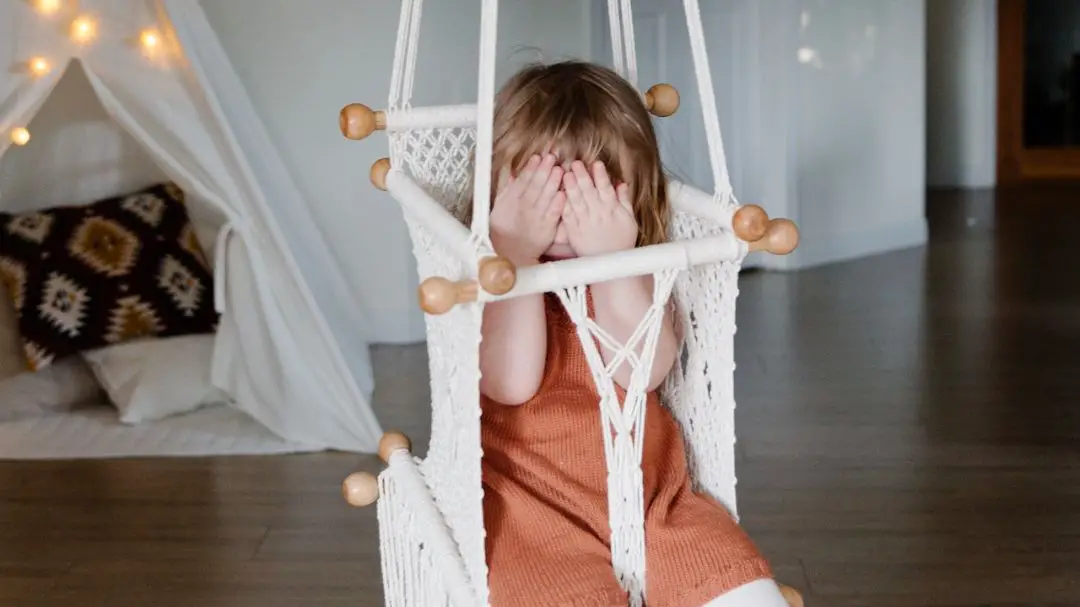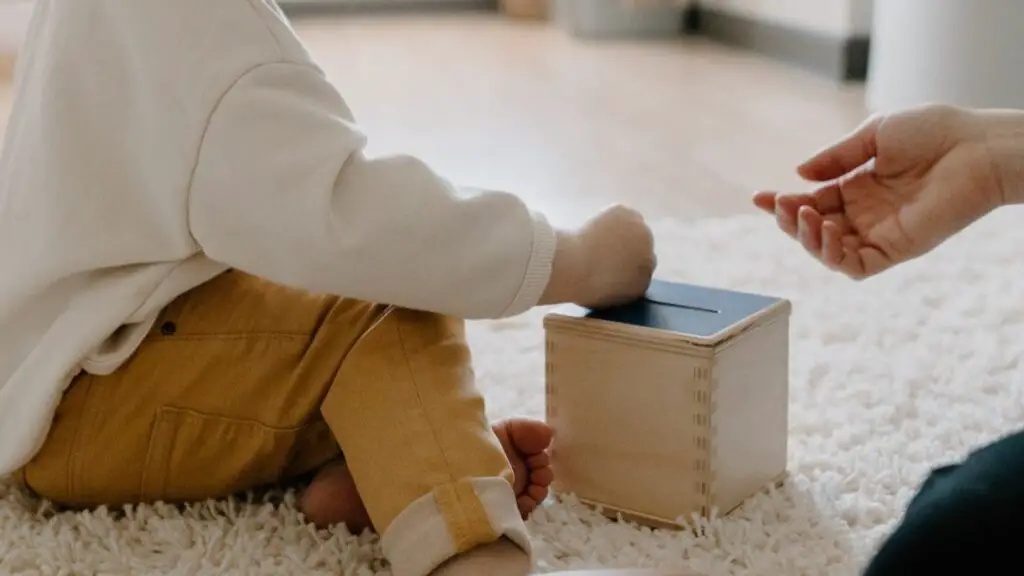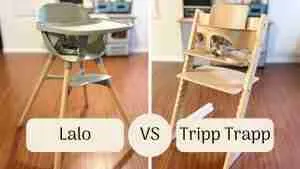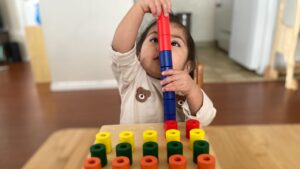
Object Permanence In Psychology: Why Is It Important?
When and how babies learn about object permanence

*Disclosure: I only recommend products I would use myself and all opinions expressed here are our own. This post may contain affiliate links that at no additional cost to you, I may earn a small commission. Thank you for your support!
Share this post
Have you ever asked yourself when does your baby start to understand that an object still exists even though they cannot see it or hear it?
You may have hidden your baby’s rattle or toy and your baby had no reaction. If they don’t see it, they think it is gone for good. But at about 8 months old, they may begin to look for their teddy bear hidden under the blanket.
The awareness that their favorite toys still exist even when they are out of sight is called object permanence. Understanding object permanence in psychology helps children to navigate the world around them and to develop a sense of trust and security in their relationships with others.
In this article, we will explore object permanence development in children, the stages of this development according to Piaget’s theory, and some games and activities that you can use to help your child develop this important cognitive skill.
In this article, you will learn:
- What is object permanence
- Piaget’s stages of object permanence
- Object permanence development
- Why object permanence is important in cognitive development
- Activities for object permanence
- And more!
By the end of this article, you will have a better understanding of the importance of object permanence in cognitive development and some practical tools for promoting this skill in your child.
Let’s get started!
Let’s define object permanence in simple terms
Object permanence is a developmental concept that refers to a child’s understanding that objects continue to exist even when they cannot be seen or heard.
In other words, it is the ability to understand that an object still exists, even if it is temporarily hidden from view. This concept typically develops in infants between 7-9 months old and is considered an important milestone in cognitive development.
The ability to understand object permanence allows children to engage in more complex interactions with their environment and helps them form a basic understanding of cause-and-effect relationships.
It also allows them to anticipate future events based on past experiences and aids in the development of problem-solving skills.
What is object permanence according to Piaget?
According to Jean Piaget, a well-known developmental psychologist, object permanence is a cognitive milestone that marks the transition from the sensorimotor stage of development to the preoperational stage of development.
Piaget believed that object permanence develops gradually as children learn to coordinate their sensory experiences with their motor actions.
Object permanence development: Piaget’s study
When does object permanence happen? Piaget proposed that in the sensorimotor stage, which lasts from birth to around 2 years of age, infants lack a full understanding of object permanence. At this stage, infants may believe that objects cease to exist when they are out of sight.
However, as they engage in sensorimotor activities, such as grasping, reaching, and manipulating objects, they gradually develop the concept of object permanence. By around 7-9 months, they have a basic understanding that objects still exist, even when they are out of sight.
Piaget believed that object permanence was an essential cognitive skill that allows children to form mental representations of objects and engage in more complex problem-solving and reasoning tasks.
According to Piaget, children who lack a full understanding of object permanence may struggle with tasks that require them to remember the location of objects or anticipate future events based on past experiences.
Piaget stages object permanence
Piaget’s object permanence theory proposes six stages of object permanence, which represent the cognitive developmental progression of infants from birth to 24 months of age.
- Stage 1: Reflexive Schemes (0-1 month). In this stage, infants use innate reflexes to explore the world around them. They do not yet have an understanding of object permanence.
- Stage 2: Primary Circular Reactions (1-4 months). During this stage, infants begin to develop an understanding of cause-and-effect relationships. They repeat pleasurable actions, such as sucking their thumb or shaking a rattle, and begin to realize that they can make things happen.
- Stage 3: Secondary Circular Reactions (4-8 months). In this stage, infants begin to explore their environment more actively. They engage in activities that produce interesting results, such as dropping objects or pulling a string. They begin to understand that their actions have consequences.
- Stage 4: Coordination of Secondary Circular Reactions (8-12 months). At this stage, infants begin to coordinate their actions to achieve specific goals. They may use one object to reach another object, or use trial-and-error to solve simple problems.
- Stage 5: Tertiary Circular Reactions (12-18 months). During this stage, infants become more experimental in their problem-solving. They may try out new actions or use objects in novel ways to achieve different results.
- Stage 6: Mental Representations (18-24 months). At this stage, children begin to use mental representations to solve problems. They can form mental images of objects and events, which allows them to anticipate future events and make plans.
Why is object permanence important in cognitive development?
Object permanence is an important concept in cognitive development because it helps children form a basic understanding of the physical world around them.
By developing the ability to understand that objects still exist even when they are out of sight or cannot be heard, children can engage in more complex interactions with their environment and form mental representations of objects.
Here are some specific reasons why object permanence is important in cognitive development:
- Helps in problem-solving: The ability to understand object permanence helps children anticipate future events and make plans based on past experiences. This helps them in problem-solving and reasoning tasks.
- Enhances memory skills: Understanding object permanence is essential for developing memory skills. Children need to remember the location of objects and events in order to anticipate future events based on past experiences.
- Develops spatial reasoning: Object permanence also helps children develop spatial reasoning skills. They begin to understand the relationship between objects in their environment and how they can interact with them.
- Fosters social development: Object permanence also plays a role in social development. As children learn to interact with others, they need to understand that people and objects exist even when they are out of sight.
What is the age for object permanence to develop?

Object permanence develops at around 7-9 months of age and continues to develop throughout the sensorimotor stage, which lasts from birth to around 2 years of age. However, the exact age at which object permanence develops can vary depending on the child and their individual experiences.
By around 7-9 months, infants have a basic understanding that objects still exist, even when they are out of sight. They may begin to search for objects that are hidden or anticipate the reappearance of objects that disappear.
As they continue to develop object permanence, they become better at remembering the location of objects and anticipating future events based on past experiences.
Is separation anxiety associated with object permanence?
Let’s quickly talk about object permanence and separation anxiety. Separation anxiety is often associated with the development of object permanence in infants.
As infants develop object permanence and begin to understand that people and objects continue to exist even when they are out of sight, they may become distressed when their parent is not present.
This is because they have developed a strong attachment to their parents and understand that parents still exist, even when they cannot see them.
Separation anxiety typically begins to emerge around 6-8 months of age, which is around the same time that infants begin to develop object permanence. Infants may become upset or distressed when their parents leave the room and may search for them or cry until they return.
This behavior is a normal part of cognitive and emotional development and usually becomes less intense as infants continue to develop object permanence and a sense of trust and security in their parents.
It is important for you to be responsive and supportive during times of separation anxiety, as this can help your infant develop a sense of trust and security in their relationships with others.
Over time, as your infant develops more advanced cognitive and emotional skills, they become better able to cope with separation and develop a sense of independence and autonomy.
Games and activities for object permanence

Simple games and activities can help your child develop object permanence. Here are some examples:
- Peek-a-boo: This classic game involves hiding your face and then reappearing, helping your child learn that objects continue to exist even when they are out of sight.
- Hide and seek: Hide a toy or object and encourage your child to search for it, helping them develop their memory and spatial reasoning skills.
- Object permanence box: This is a very common Montessori toy and consists of a wooden box with a hole in the top and a drawer at the bottom. Put a toy in the box and let your child retrieve it from the drawer.
- Nesting toys: Toys that fit inside one another, such as nesting cups or blocks, can help your child develop object permanence and spatial reasoning skills as they learn to fit the objects together and separate them.
- Play tunnels: Crawling through a tunnel and discovering toys hidden inside can help your child understand that objects still exist even when they are out of sight.
- Sorting games: Sorting toys or objects by color, shape, or size can help your child develop their cognitive and motor skills while also reinforcing object permanence development.
- Building blocks: Playing with building blocks can help your child develop their spatial reasoning skills and understanding of how objects fit together to create larger structures.
There are many fun and engaging games and activities you can do to help your child develop object permanence and other important cognitive skills. These activities can be adapted to suit the needs and interests of your child and can be incorporated into everyday play and routines.
Signs that a baby is developing object permanence
There are several signs that indicate your baby is developing object permanence. Here are a few to look out for:
- Searching for a hidden object: As your baby develops object permanence, they will start to look for objects that have been hidden from view.
- Tracking moving objects: As your baby’s visual tracking skills improve, they may start to follow the movements of objects that are moving out of their field of vision.
- Reacting to familiar objects: Your baby starts to recognize familiar objects and may react differently when those objects are removed from view.
- Playing peekaboo: Peekaboo is a classic game that helps babies learn object permanence. If your baby starts to understand that you will reappear after you hide, it is a sign that they are developing this skill.
- Playing with toys: As your baby begins to understand that objects still exist when they are out of sight, they may start to play with toys in new and more complex ways. For example, they may drop a toy and then search for it, demonstrating that they understand that the toy still exists even when they can’t see it.
Final thoughts on object permanence in psychology
Object permanence is an important milestone of cognitive development in children, and recent research has shown that infants are capable of mastering this skill earlier in life than previously believed.
You can help your baby develop object permanence by engaging in games and activities like peekaboo or using an object permanence toy. These activities not only help with cognitive development but also provide enjoyable bonding experiences between you and your child.
I truly hope you found this article helpful. If you ever want more tips and strategies, or just need to stay motivated with Montessori at home, visit my Instagram page and YouTube channel where I share more information so you can be successful with Montessori at home.

Hello, I am Leslie. I am on a mission to help you support the growth and development of your child. With the right tools and proper guidance, you can navigate parenthood with confidence and assertion! My goal is to equip you with knowledge to help you construct a strong foundation for your child’s life.
Suggested articles
You May Also Like

Best products for baby led weaning to start solids in 2023
Some must-have baby led weaning products include a high chair, bibs, plates, bowls, cups, and silverware that are designed to cater to your baby’s needs and make the baby led weaning process fun and easy.

Do You Need A Crib? 5 Best Crib Alternatives
These are the best crib alternatives that provide the safest and most comfortable sleeping area for your baby.

Lalo vs Stokke Tripp Trapp: Here is the clear winner
This is my detailed comparison of the Lalo vs Stokke Tripp Trapp high chair. The Lalo and the Stokke Tripp Trapp are two of the best high chairs that grow with your child.





